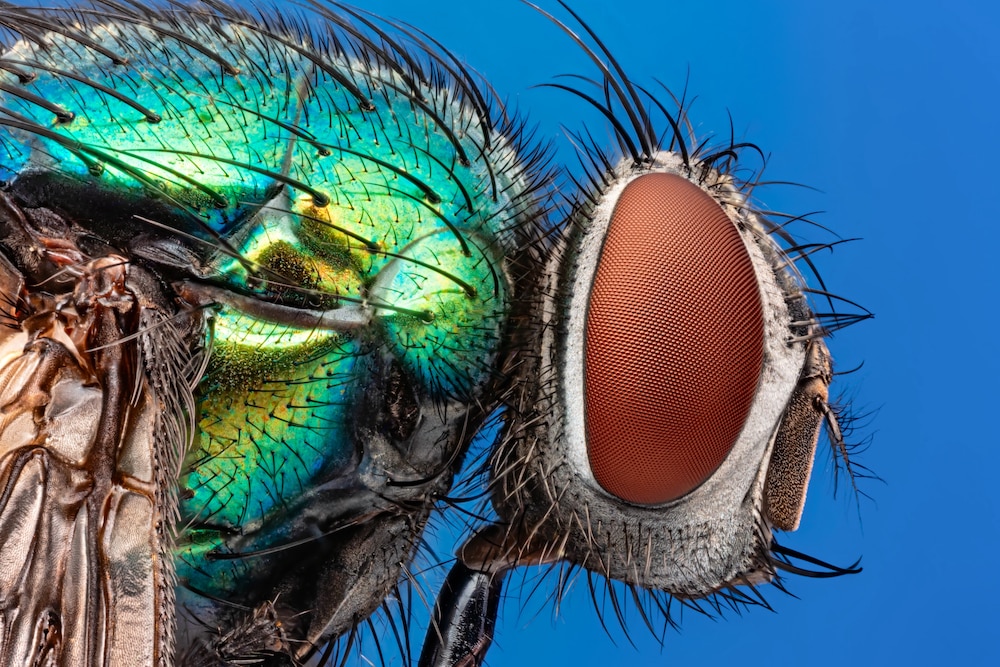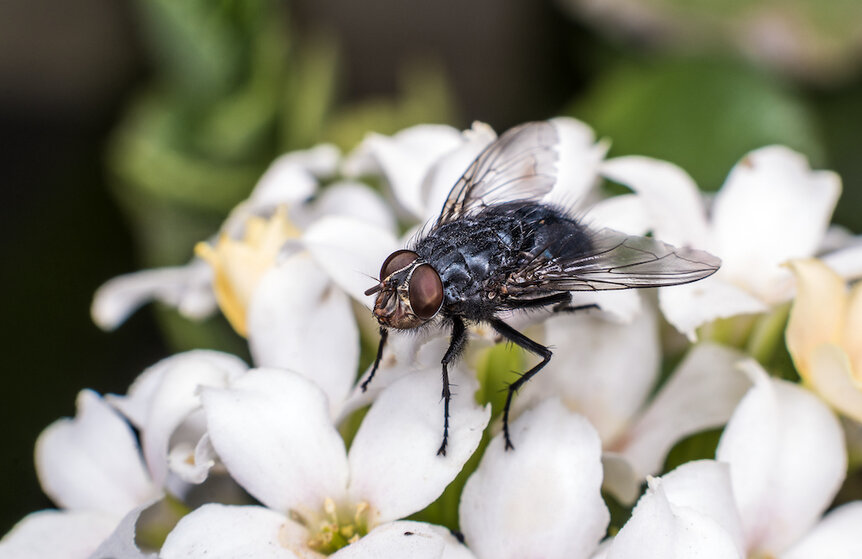Create a free profile to get unlimited access to exclusive videos, sweepstakes, and more!
Building an insect Air Force, using flies to detect chemical weapons
You are what you eat, and it turns out flies sometimes eat chemical weapons.

It started with animal poop, and it ended with the detection of chemical weapons agents. That might sound like an unusual trajectory for a line of research, but sucking up contaminants, whether biological or synthetic, is all in a day’s work for the humble blow fly.
Scientists began by looking for a new way to track the distribution of animal populations in the wild. Conventionally, this is done by capturing and tagging animals to gain a representation of the larger population, but that doesn’t always work, particularly if a species is threatened or otherwise hard to find. Blow flies, on the other hand, are easy to find. They’re everywhere and capturing them only requires setting out traps of rotting meat. The idea was to catch blow flies and examine what they’d been consuming. If a fly has been eating the feces of a bear, for instance, then you have good evidence bears are in the area without having to catch and tag them.
Feces contains chemicals which are the breakdown products of hemoglobin; that’s what gives it the brown color. It’s those chemicals that researchers were looking for inside blow flies. Once it was proven that individual chemical compounds could be retrieved from the gut of blow flies, it was a small leap to wondering what other chemicals they might be storing. That’s when DARPA stepped in wanting to know if flies could be used to identify the presence of chemical weapons.
The resulting study, carried out by Nick Manicke from the department of chemistry and chemical biology at Indiana University Purdue University Indianapolis, and colleagues, was published in the journal Environmental Sciences and Technology.
“The question was, if we could detect chemical agents like nerve agents if the flies had been around a water sample or carrion that had these molecules in it,” Manicke told SYFY WIRE.
There were a couple of big hurdles to studying how flies interact with and pick up nerve agents from the environment. Direct exposure to nerve agents is likely to kill the flies, meaning they won’t show up to the traps to be examined. Moreover, access to nerve agents is tightly controlled and researchers did not have authorization to work with them, so they had to get clever. Luckily, chemistry is messy and that worked to the team’s advantage.
When chemical agents are synthesized, there are inevitably undesired side reactions which produce biproducts. Those biproducts may be less deadly but are still indicative that someone is cooking up something nasty. Additionally, chemical agents start to degrade into other compounds once they come into contact with the environment. If you can’t search for nerve agents directly, looking for the chemicals they hang around with is the next best thing.
“We took those chemicals, diluted them in water, and gave it to the flies on tissue paper. Then we measured them using mass spectrometry, which works well for detecting things at low concentrations in a complicated background,” Manicke said.
That’s important because a blow fly is a complicated organism, at least compared to the specific chemicals scientists were targeting. Running them through a spectrometer reveals all of the compounds that make up their bodies and anything they’ve been eating or drinking. Then the machine has to parse through that data to find what you’re looking for, but that’s what spectrometers are good at.
Hunting for synthesized chemical agents in the environment using flies has many of the same advantages as using them to identify the presence of animal populations in the wild. Namely, stealth.
“The idea is, if you have remote areas or areas where access is restricted, or places where we want to collect samples covertly, we could pull in flies and see if they have any of these molecules in them,” Manicke said.
Spying on the production of chemical weapons is an inherently dangerous business, but it’s a lot easier to be a fly on the wall when you’re a literal fly.


























